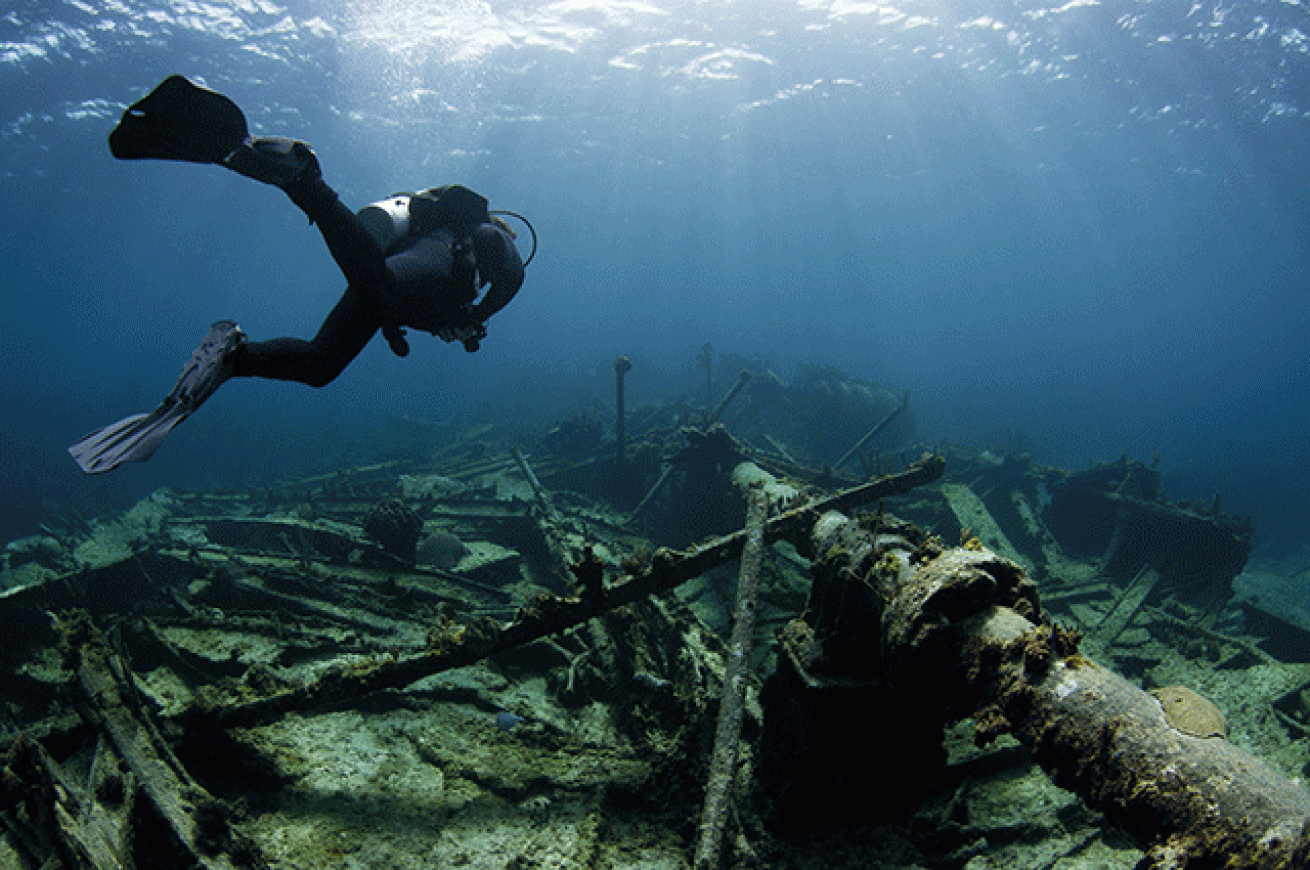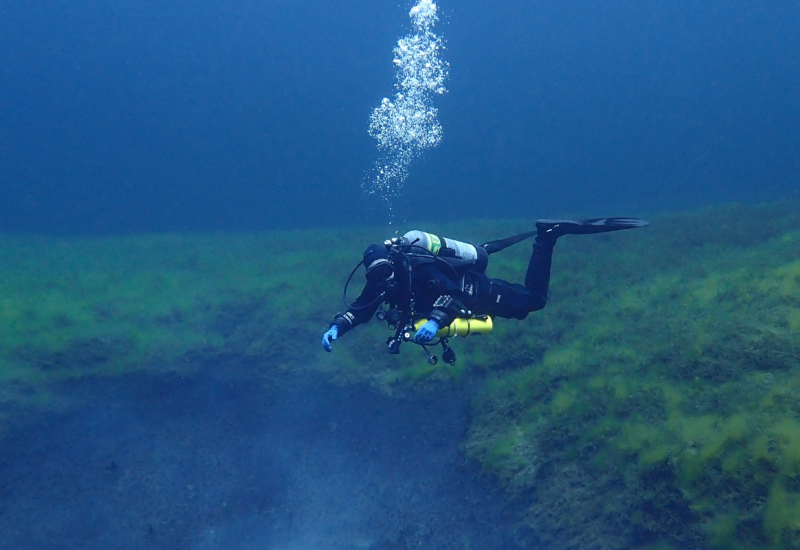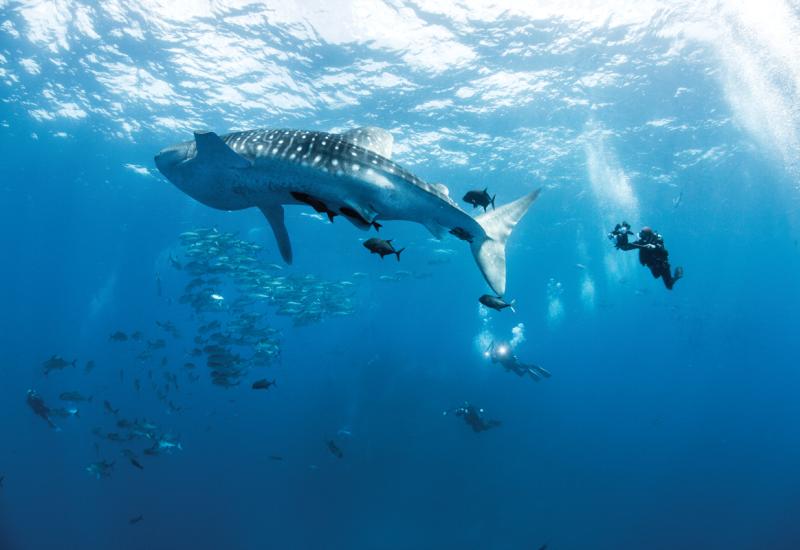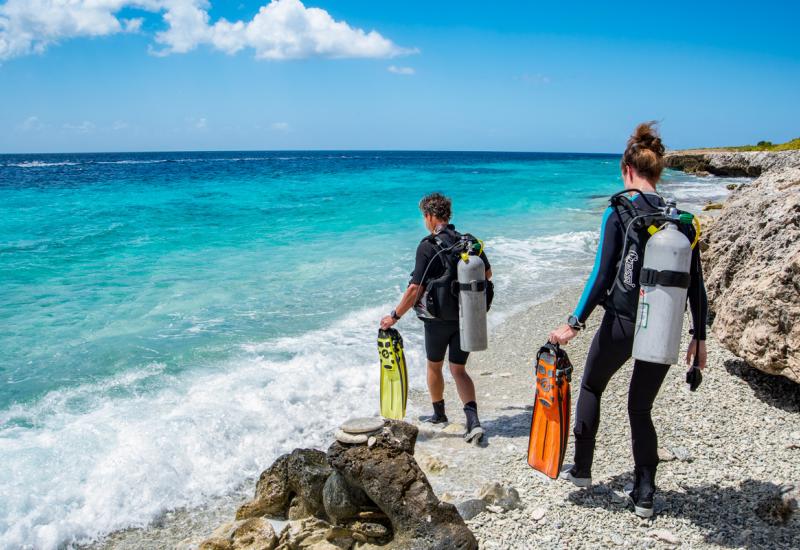Training: 5 Tips to Safely Dive a Shipwreck

5 Tips to Safely Dive a Shipwreck
Diver safely navigates underwater wreckage.
Shutterstock
Do you know your wreck-diving basics? If not, read on (and remember that penetrating a wreck is a whole different ballgame, and requires advanced training).
1. Follow the mooring line. Start your dive by surface swimming or pulling yourself along a tag line to the mooring before making your descent. The mooring is your shortest, safest path between the dive boat and the wreck.
2. Remember where you started. On a large wreck with multiple moorings, it can be easy to finish your dive at the wrong boat. Once you descend, take note of your location. Are you at the bow or stern? Port or starboard? Are there unique features like a crane or a winch that you’ll notice on the way back?
3. Use the current. Start your dive against the flow. If possible, keep to the leeward side, where the superstructure of the ship will provide some protection. For the return swim, you can explore the exposed side of the wreck, drifting with the current for an easy ride back.
4. Plan your dive. Always start your wreck dive at the deepest part of your dive plan. Follow the rule of thirds: Use one-third of your air (or bottom time) swimming out, a third coming back, and keep a third in reserve.
5. Gear up. Wear a full-length wetsuit when wreck diving to protect against sharp or rusted metal and other objects. Standard gear should include a dive computer, a knife and an underwater flashlight.
Want more advice to improve your dives?
See Scuba Diving's tips: If You're Left Behind | Buying the Perfect Mask | Point-and-Shoot Photography

ShutterstockDiver safely navigates underwater wreckage.
Do you know your wreck-diving basics? If not, read on (and remember that penetrating a wreck is a whole different ballgame, and requires advanced training).
1. Follow the mooring line. Start your dive by surface swimming or pulling yourself along a tag line to the mooring before making your descent. The mooring is your shortest, safest path between the dive boat and the wreck.
2. Remember where you started. On a large wreck with multiple moorings, it can be easy to finish your dive at the wrong boat. Once you descend, take note of your location. Are you at the bow or stern? Port or starboard? Are there unique features like a crane or a winch that you’ll notice on the way back?
3. Use the current. Start your dive against the flow. If possible, keep to the leeward side, where the superstructure of the ship will provide some protection. For the return swim, you can explore the exposed side of the wreck, drifting with the current for an easy ride back.
4. Plan your dive. Always start your wreck dive at the deepest part of your dive plan. Follow the rule of thirds: Use one-third of your air (or bottom time) swimming out, a third coming back, and keep a third in reserve.
5. Gear up. Wear a full-length wetsuit when wreck diving to protect against sharp or rusted metal and other objects. Standard gear should include a dive computer, a knife and an underwater flashlight.
Want more advice to improve your dives?
See Scuba Diving's tips: If You're Left Behind | Buying the Perfect Mask | Point-and-Shoot Photography










